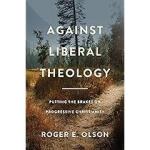Now Featured in the Patheos Book Club
Brigid: History, Mystery, and Magick of the Celtic Goddess
by Courtney Weber
Chapter 1
A character quaint and fierce, powerful yet graceful, has woven a trail across oceans and borders, cultures and languages, practices, folklore, prayer, and song, creating a strangely perfect sort of unity melded only under a divine hammer. She stands watch over the delicate, serene trickle of Ireland's holy wells and stoic Welsh cathedrals. She appears in Glastonbury's healing temples, depicted with flaming sun-hair, and also in murals of the Haitian Voudon Lwa, with a pale face in a wild, clashing costume, watching over the cemetery. She stands with a shepherd's staff over a tiny fox as the patron saint of New York City's Loisaida. In Ireland, she has been called Bhríde, Brig-eoit, Brigit. In Scotland, Brigh, Bridi, Bridean, Brüd. Wales has called her Bregit, Breit, Breid, Freit, Ffraid, Ffred, Fride. In what is now France she has been called Brigette or Britta, and in England, she was known as Brigitae or Brigantia. This is the Goddess of the forge and anvil, of poets, painters, and prophets. She is a Goddess of healing as well as battle, of fire but also water, of love and of death. She blesses small animals, guards orphaned children, and challenges authority. She has crossed the chasm of regional land Goddess to Christian saint and back again to a contemporary Goddess of a global scope. Distinct as the multitude of tongues that speak her name, and deeply rooted in creation, destruction, regeneration, and sometimes contradiction—this is Brigid.
A teacher of mine believes a whole spiritual tradition could be filled solely with Brigid devotees. In the Neo-Pagan community, I have seen a plethora of covens dedicated to her and met more Brigid devotees than I can count. This does not include the hundreds of churches, women's groups, convents, and other spiritual or secular charity organizations dedicated to Brigid. She is everywhere and she is not relegated to one faith.
But who is Brigid? So much about her remains a mystery. How did a Goddess whose origins lay in the soils and waters of the Celtic world slowly but deftly take hold in so many places, both at the source and thousands of miles away? How did she begin and, perhaps more curiously, what has she become?
Brigid the Exalted: A Celtic Goddess
To understand a Deity, one must attempt to understand the history and nature of the first people to worship that Deity. Brigid originated in the pantheon of the Celtic people—the residents of Ireland and the British Isles. Much like Brigid, the history of these people is mysterious and complex. I once heard a description that exploring the Celts' historic identity is like watching television with the sound off. One can kind of decipher what's going on, but quite a bit of the story is lost. Mysterious artifacts tell us a bit about what the ancient Celts were like, but prior to the introduction of Christianity, the Celts left no written records. We are left guessing at what these pieces meant to the people who utilized them. Neighbors of the ancient Celts left the most descriptive accounts, but this is a little problematic. Most of the history written about the ancient Celts was penned by foreigners or enemies who may not have had an adequate understanding of Celtic culture or who likely wrote slanted accounts. Sometimes, Deities and their myths are the best informants about the people who worshipped them, and in looking through the Deity to understand the people, we learn even more about the Deity.
What we do know about the ancient Celts, based on their peers' writings, is that they were envied for their beautiful clothing and jewelry, but feared on the battlefield. They were criticized for indulging in booze and sensual pleasures, but also praised for their health and fitness. Some marveled at the Celtic society, where it was said no beggars could be found, and admired their extensive hospitality to friendly guests. Other accounts describe the Celts as shrewdly protective over their lands and tribes, wary of strangers, unabashedly willing to shed blood to defend what was theirs. Their religious world was equally passionate, and it was from this that Brigid's iron-strong legacy was born.
The ancient Celtic world was a massive civilization whose height of power occurred roughly 600 b.c.e. to 400 c.e. in Ireland and the British Isles, as well as what is now Portugal, northern Italy and Spain, France, southern Poland, and central Turkey. It was a melting-pot culture which originated from tribes that immigrated from extensive regions of the world, intermarrying with pre-Celtic indigenous peoples. Brigid likely began as a collection of Goddesses—some regional Stone Age Goddesses, some imported with immigrating tribes. In the way that streams feed rivers, these early Deities fed into Brigid—her own ancestral streams possibly tens of thousands of years old.




